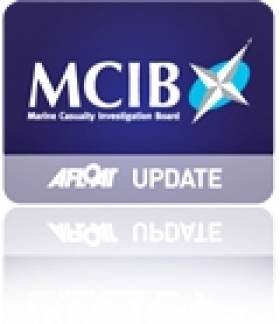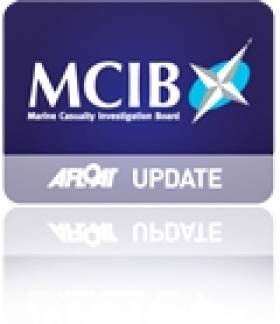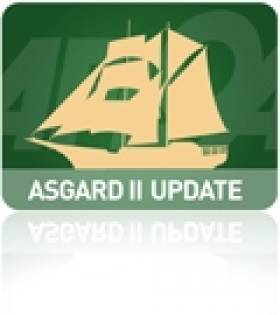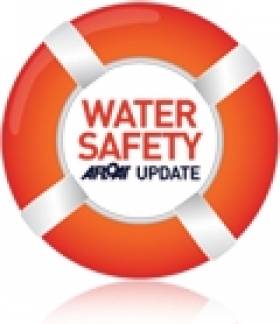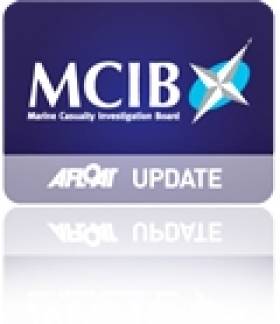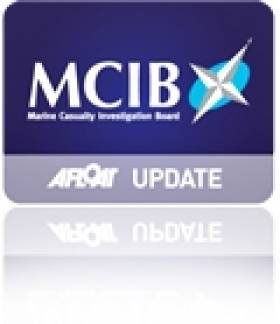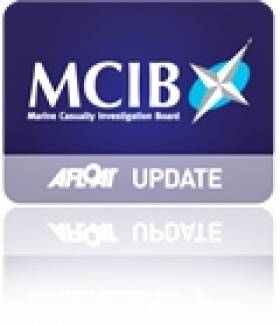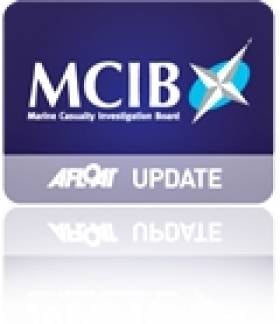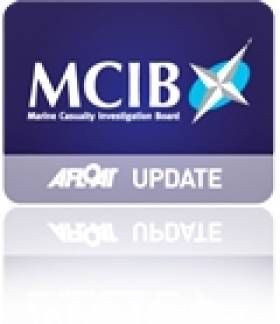Displaying items by tag: Marine Casualty Investigation Board
Report into Asgard II Sinking Due Tomorrow
On 10th September 2008 the STV "Asgard II" departed Dournenez, France bound for La Rochelle, France with 5 crew and 20 trainee crew onboard. At approximately 01:00 hrs GMT on 11th September 2008 when off St. Nazaire in the Bay of Biscay water ingress was observed in the Trainee Mess. At 01:05 hrs a Pan Pan message was broadcast. At about 01:15 hrs a Mayday Relay message was received by French Search and Rescue (French SAR) as the water in the Trainee Mess continued rising rapidly. The crew attempted to pump the flood water without success.
The ship was abandoned by liferaft at approximately 01:50 hrs. Two French lifeboats rescued all 25 persons from the liferafts.
During the abandonment the floor of one of the three liferafts launched failed and the persons onboard were successfully transferred to the other liferafts. No loss of life occurred and there were no injuries reported.
Two Investigations Underway into Weekend Boating Accident
Gardai launched a full investigation into the weekend boating tragedy where two men died in Inishboffin harbour.The men were identified locally as former Mayo footballer, Ger Feeney, and businessman, Donal McEllin, both from Castlebar.
It is understood the pair left the island by small RIB to travel back to their motor cruiser some time after midnight on Saturday and are both thought to have been wearing lifejackets when they set out.A second investigation is also to be carried out by officers of the Marine Casualty Investigation Board (MCIB).
More here:
Ex-GAA star dies in double drowning tragedy off island
Two men drowned off Inishbofin
Castlebar in shock as Inishbofin victims are named
Related Safety posts
RNLI Lifeboats in Ireland
Safety News
Rescue News from RNLI Lifeboats in Ireland
Coast Guard News from Ireland
Water Safety News from Ireland
Marine Casualty Investigation Board News
Marine Warnings
Crew Man Fell Overboard from 'Alma Amy' and Died-Report
The cause of the death was determined by post mortem examination as being due to cardiorespiratory arrest secondary to drowning. The full report is available for download below.
Asgard II Accident Report Due in Two Weeks
The Marine Casualty Investigation Board (MCIB) report of the investigation in to the sinking of Asgard II will be published in the next two weeks, two years after the ship sank off the French coast. The Irish Times has more HERE.
Raise the Asgard - Afloat's 2008 online petitionWhat to Do when Fire Breaks Out Onboard a Vessel?
The accident has been a reminder to all boat owners of the need to carry out regular fire drills and the need for regular maintenance checks on all electrical installations. It has led to a number of requests for advice from readers about what to do in the event of a fire onboard.
Here are a few items from the various publications taken from the Marine Safety Working Group's "Safety on the Water" website which might prove a useful start:
From the Motor boating Sea Safety Guidelines:
If you have a fire on board:
* Rig a sea anchor/drogue so that smoke and flames blow clear of the boat.
Rig it from stern or stem, whichever is appropriate.
* Do not enter any smoke filled space. Try not to breathe in any smoke, as it may be poisonous.
* Put on your lifejackets.
* Get everyone on deck and take all the fire extinguishers with you.
* Try to extinguish the fire where possible. Use a fire blanket to smother
small fires. When using a fire extinguisher, try to hold it upright.
* Fire requires oxygen. Reduce supply of air by sealing vents and hatches. If there is smoke coming from the engine compartment, only open the access hatch enough to insert the nozzle of the fire extinguisher.
* Notify the emergency services.
* Move both the crew and the liferaft as far as possible from the seat of the fire.
* Fitting a fire access port to the engine compartment offers the greatest safety."
From the Power boating Sea Safety Guidelines:
If you have a fire on board:
* Try not to breathe in smoke which may be poisonous.
* Try to extinguish the fire where possible.
* Fire requires oxygen. If there is smoke coming from the engine compartment, or from under the engine cover, only open the cover enough to insert the nozzle of the fire extinguisher.
* Get everyone away from the fire and ready to abandon the vessel, wearing
lifejackets or buoyancy aids.
* Notify the emergency services."
Crew Man Got Caught in Bight of Rope and Pulled Overboard
Report Finds Emerald Star Line Cruiser Ran Aground on Rocks
The Marine Casualty investigation board has issued its Report of Investigation into the grounding and subsequent foundering of an Emerald Star Line Caprice 8, a Charter boat, The boat ran aground on rocks in the vicinity of Mountaineer Rock, off Ryan's Point on Lough Derg, Co. Tipperary last October 9th. The four persons on board were taken off by the Portumna Fire and Rescue RIB and ferried across the lake to Williamstown Harbour. The vessel was noted to have been severely holed. The vessel was pulled off the rocks and subsequently sank while under tow. There were no fatalities and no pollution associated with this incident. A copy of the report can be downloaded below.
Men Drowned When Currach Capsized – Report
The report surrounding a fatal incident in a fibreglass Currach at Claddaghduff was published this afternoon by the Marine Casualty Investigation Board and is now available to download below. The report found that on the morning of 21st April 2009, whilst attending to fishing pots off Aughris Point, Claddaghduff, Co. Galway, two men, Mr. Fechin Mulkerrins and Mr. Anthony Coohill got into difficulties. Their currach capsized and as a result both men drowned. Neither man was wearing a Personal Flotation Device/Approved Life Jacket.The report found that the most significant factor in establishing the cause of the incident is the fact that when the vessel was found, a line of pots were tied off to the thwart (seat) between pots number 4 and 5. This indicates that of the string of 10 pots, (each pot weighing approximately 10 kg when dry and empty), 4 were onboard and the remaining 6 were hanging over the side and along the seabed in an approximate depth of 8 to 10 metres, the reprot concluded. This would at best restrict the vessel's vertical motion in a seaway and at worst snag the seabed thus compromising the stability/survivability of the vessel. Eventually the rolling accelerations would result in the vessel capsizing, the report said.
The Marine Casualty Investigation Board has advised reports into the "Skellig Light II", Claddaghduff and "Ikom K" accidents will be released later today. Check back here for full details as we have them.
No Direct Cause Found for Loss of Fishing Vessel
An investigation into the sinking of the FV "Strath Marie" off Inishowen Head, Co. Donegal on 14th March 2008 has found no direct cause for the loss of both lives. The FV "Strath Marie" left Bunagee Pier, Culdaff, Co. Donegal to lift strings of pots. Crewmembers Mr. Francis McDaid and Mr. Daniel McDaid were on board.
The weather forecast was for south to southwest Force 3 or 4 with good visibility and slight to moderate sea state. The reported weather conditions on the day were better than the forecast. At 17.17 hrs. on 14th of March 2008 a "999" call was made as the "Strath Marie" was overdue.
At 18.13 hrs. on 14th March 2008 the first casualty was recovered from the water and at 20.38 hrs. the second casualty was recovered. Both men were brought to Altnagelvin Hospital in Derry where they were later pronounced dead.
Parts of the fishing vessel were later recovered and examined along with other evidence to try and establish the cause of the loss of the FV "Strath Marie". The full report is downloadable below.


























